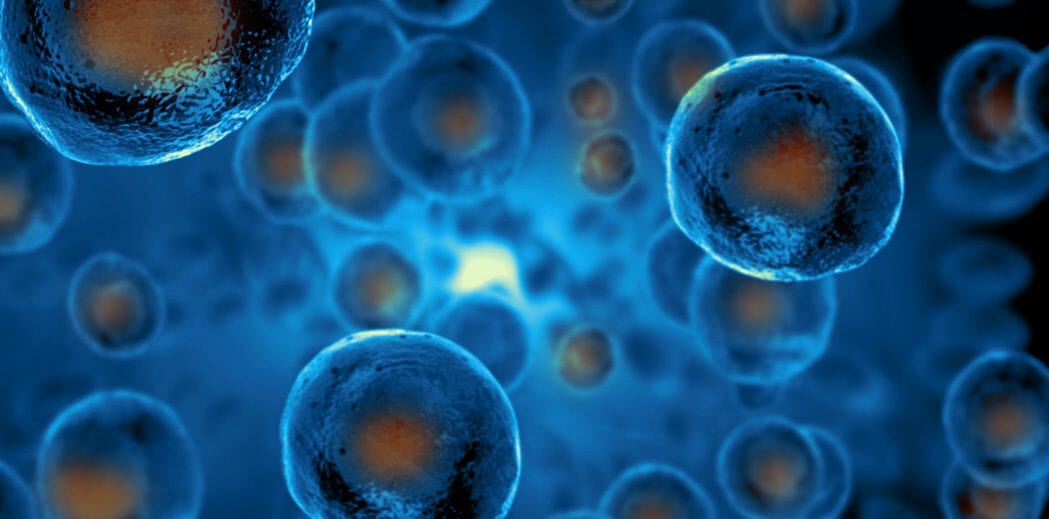
Glycans: One bond, one message
Your cells are quite the communicators and for great reason. They talk with one another chemically to understand your body’s needs. However, they don’t wake up one morning and decide to chat like a group of proud parents. Cells rely on cell receptors, proteins, and, most importantly, glycans to help translate their languages into a universal one. In this blog, we’re breaking down the function of glycans, cellular communication, and what that means to our overall well-being.
What are glycans?
Glycans, plant sugars commercially known as glyconutrients, are made up of simple and complex carbs that are the foundation for living things or health. The intensity of the glycan can depend on the type of organism that utilizes them. Its role also relies on what it is bonded to, a protein or lipid1.
Their functions are so significant that there’s even a higher education course called glycobiology. It’s the study of the evolution of saccharides, their biology, and the nature of the proteins that identify with them2. With over 200 plant sugars, how can you choose which glycan is the best for you? Great question. We can’t give you a definite answer, but two glycans stand out, Arabinogalactan and Acemannan (say both these names five times fast).
Arabinogalactan is a glycan taken from the bark of the western larch tree found in North America, and it also has been used in vaccine studies. Researchers found that the vaccines with Arabinogalactan had supported the increase in immune response of study participants. Acemannan is mannose (a sugar molecule bonded to other molecules to form a natural or artificial substance) from aloe. It has been scientifically studied to support immune modulation and cellular metabolism, absorbing nutrients like vitamins C and E from the GI tract. Lastly, it promotes cellular communication, which is critical to who we are, down to the last molecule.
They help our cells communicate.
Glycans don’t just sound important. They are. Especially when it comes to cellular communication. Cellular communication tells your body how to effectively transport nutrients to your cells for the sake of your health, and well, it doesn’t get any more critical than that.
How does this communication work? Cell receptor sites are on the outer portion of every cell. In each of the receptor sites, there’s a space reserved for glycoprotein, created when glycan bonds with a protein. This process is also called glycosylation3. Each receptor must have a unique type of glycoprotein to function appropriately. Glycoproteins are like words in a “complete the sentence” puzzle, and glycans (eight total) are similar to the letters needed to form these words. One glycan won’t win the game. But when all eight glycans are present, they come together as pieces of the cellular alphabet to make more words and sentences capable of delivering complete cellular communication.
If you need another example, we totally get it. Cellular communication can be a little tricky. Let’s talk about another type of cellular communication, the cell phone. It can’t work on its own. Phone towers are required before we tap the screen. Imagine that cell receptors are phone towers, and glycans are our cell phones. A signal is communicated from one phone tower (cell receptor) to the cell phone (glycan) requiring service (cells). Regardless of the immune, nervous, cognitive, and digestive functions, the eight glycoproteins tell your body what task to carry out.
The interesting history behind glycans.
The earliest glycans can be traced back to the Ancient Greek era in which Alexander the Great, King of Macedonia, carried large amounts of Aloe vera on his supply train for his army4. However, Ancient Greeks weren’t the only people who believed in the many benefits of Aloe vera. Civilizations from Egypt to China have also used it for centuries for it’s health and beauty support properties5. Fortunately, this was only the beginning of what we know about glycans and their benefits.
In 1857, French physiologist Claude Bernard was the first to investigate glycans’ power scientifically4. He wanted to capture a deeper understanding of how glycans react within the body. As a result of his research, Bernard could then describe the isolation of a sugar-forming substance6. Little did Claude know that 34 years later, in 1891, German-born scientist and Nobel Prize winner Emil Fisher would describe the glycan structure without the help of today’s sophisticated microscopes4.
Over the years, scientific advances have aided our knowledge of glycans. Since the 1950s, there has been an encouraging progression of the subject, from the first PubMed editorial, a free resource for biomedical and life science information7, to what we know about Heparin, Acemannan, and their roles as glycans. This progress illustrates the importance of glycans, solely demonstrated through the steady stream of information published every decade.
Glycans can assist with healthy aging too.
Let’s rewind to our discussion of ancient civilizations and their use of Aloe vera. Earlier societies used Aloe vera as a beauty regimen, applying it to maintain the appearance of their skin. Greeks referred to Aloe vera as the go-to for one’s overall health. At the same time, Egyptians considered it a portal of longevity5. Although we’ll never fully understand the science behind their decisions, there’s one thing that is for sure. Their perceptions were not that far off. Aloe vera is still popular today.
Glycans have proven themselves to be essential to skin health. While they change as we age, they are still critical in skin homeostasis or when cells replace others lost or damaged8. A scientific study containing thirty healthy females over the age of 45 revealed that the facial wrinkles of subjects who received two different doses of the Aloe vera gel improved significantly9.
As we age, so do our brains, a sometimes-painful fact of life. By age 50, our cognitive abilities are typically on the decline4. But scientists have discovered that glycans may positively respond to various parts of the cognitive process such as memory4. Did you know that glycosylation is a critical component of brain development? Over 70% of proteins in the brain are glycosylated10. What does this mean? Glycans matter. Studies have shown that memory can change significantly, sometimes in 24 hours, with a four-gram application of a specific glycan complex4.
If you take away anything about glycans, it should be that they are arguably one the elements of life. Their existence has opened doors to past, present, and future biological studies, which will only progress as we learn more about plant sugars. With glycans, our future seems a little brighter. With glycans, our possibilities appear endless.
Sources
1 Biological functions of Glycans, National Library of Medicine.
2 Essentials of Glycobiology, National Library of Medicine.
3 Effect of glycosylation on protein folding: a close look at thermodynamic stabilization, Proceedings of the National Academy of Sciences.
4 Manapol, The King of Glycans, Dr. Steve Nugent, PsyD.
5 Aloe vera: A short review, National Library of Medicine.
6 Claude Bernard and the discovery of glycogen, National Library of Medicine.
7 PubMed Overview, National Library of Medicine.
8 Epidermal homeostasis: a balancing act of stem cells in the skin, National Library of Medicine.
9 Dietary Aloe vera supplementation improves facial wrinkles and elasticity, and it increases type I Procollagen Gene Expression in human skin, National Library of Medicine.
10 Glycomic profiling and the mammalian brain, Proceedings of the National Academy of Sciences.




















